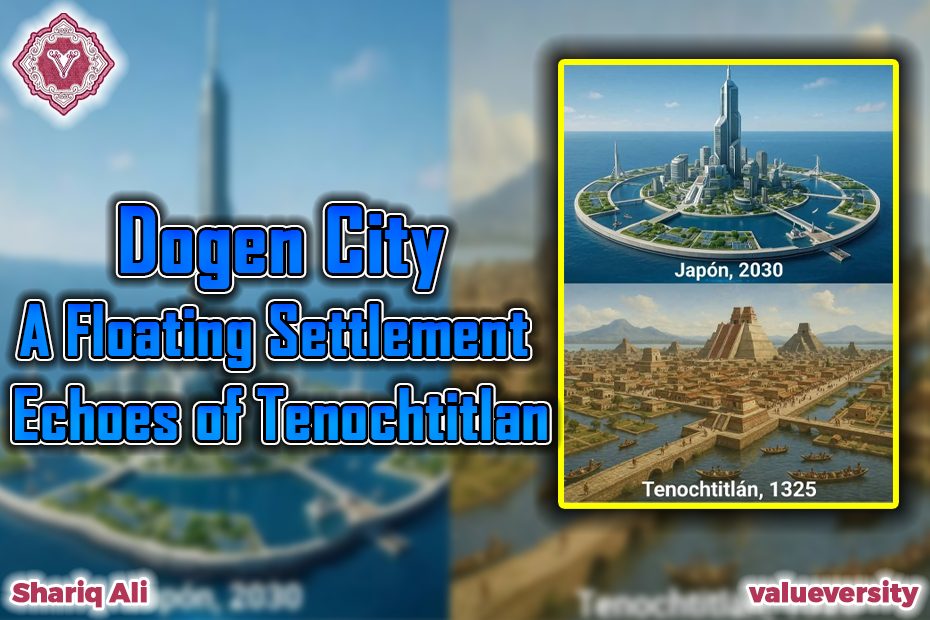Dogen City – A Floating Settlement: Echoes of Tenochtitlan
Shariq Ali
Valueversity
The project known as Dogen City is a revolutionary concept from Japan envisioning a residential settlement of the future. In essence, it is an attempt to transform an ancient idea using modern technology. Developed by the Japanese startup N-Ark, this project is expected to be completed by 2030. Floating on the sea, this city-like settlement will span approximately four kilometers in diameter and accommodate up to 40,000 residents. It will be designed to withstand rising sea levels and natural disasters.
Notable features will include modular architecture, renewable energy sources, underwater data centers, cloud-based medical facilities, a rocket launch platform, and telemedicine services. Marine agriculture and aquatic food cultivation projects will serve as sources of self-sufficiency.
However, this is not the first time humanity has attempted to build a city on water. Around 700 years ago, the Aztec civilization constructed a magnificent city named Tenochtitlan on Lake Texcoco in 1325. Its population exceeded 200,000. The Aztec people skillfully managed agriculture, transportation, and water systems through chinampas (floating farms), canals, and waterways.
Though these two cities are separated by centuries, they reflect a shared thread of human imagination, creative ambition, and instinct — a timeless yearning to live in harmony with nature and to carve new paths.
Where Dogen City relies on digital technology and biological innovation, Tenochtitlan stood as a brilliant example of natural balance and aquatic engineering.
In truth, Dogen City is not only a step toward the future — it is also a revival of ancient wisdom in a modern form. And it comes at a crucial time when the world faces growing environmental challenges.
